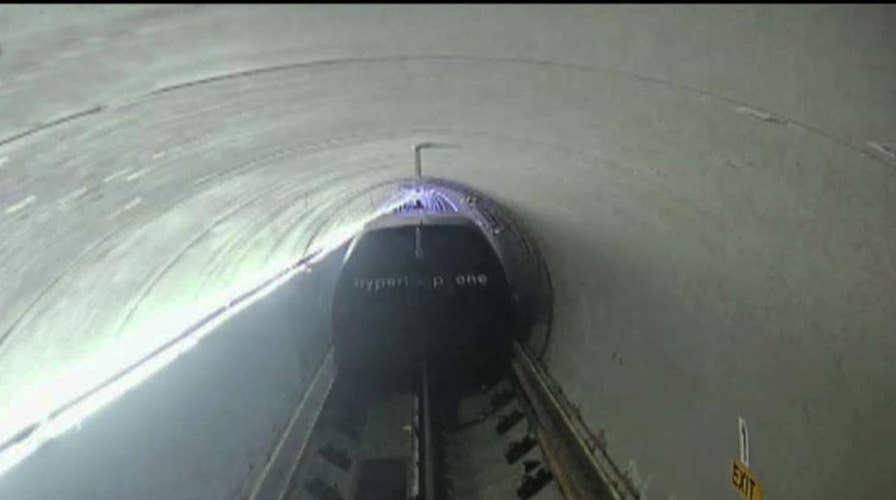Hyperloop: Engineers develop new high-speed form of travel
Hyperloop, or tube travel, will allow humans to travel faster than the fastest high-speed train; Douglas Kennedy shares the details.
Anita Sengupta believes that high-speed tube travel via Hyperloop is surprisingly similar to space travel, and she should know. As the lead systems engineer involved withparachute deployment of the Mars rover, she sent us where no one had gone before.
Now, as the Senior Vice President of Systems Engineering at Virgin Hyperloop One, Sengupta is bringing space travel down to earth, something she says is “inspired by science fiction, but now it’s science fact.”
“The government thinks we're a railroad, but in reality we're a lot more like airplanes."
The science behind Hyperloop will allow humans to go faster than the fastest high speed train. Even faster than some of the fastest planes in the sky. Sengupta told Fox News’ Douglas Kennedy that passengers will be able to get from Kansas City to St Louis or from New York to Washington in 30 minutes or less. “What we're doing is targeting a peak speed of 1,000 km per hour, which is roughly 700 miles an hour,” she explained.
The tubes create a low pressure environment that almost completely cuts out drag. Another key feature of this new form of travel is the motor, which will allow Hyperloop to completely change the way we travel. Picture a straightened out version of a conventional rotary motor.
“It's called a linear electric motor and what that means is that you have a rotor and a stator, but they're actually stretched out so one portion is on the underside of our vehicle, which we call the pod, and the other side is on the bottom of the track,” Sengupta described.
Hyperloop One has successfully tested a loop out in the Nevada desert, which has already hit top speeds of 240 miles per hour, according to Sengupta. The current top speed is limited only by the fact that the experimental tube is only 500 meters long.
Start-up costs will be in the billions. Nonetheless, Missouri and Colorado both want to be test sites for this futuristic mode of transportation.
Dan Katz, Virgin Hyperloop One’s government liaison explained that one of the big obstacles for this brand new technology is writing new regulations.
With pressure systems similar to planes, and land systems similar to trains, regulation still remains unclear. “The government thinks we're a railroad, but in reality we're a lot more like airplanes,” Katz clarified.
“What we're doing is targeting a peak speed of 1,000 km per hour, which is roughly 700 miles an hour."
No matter what, Sengupta resolutely feels that Hyperloop is the future of nearly instantaneous travel.
“We have not had a new mode of transportation in over a hundred years,” she pointed out. “So, this is a way that you can get from point to point across land masses.”
Not just across land masses, but located within city centers, so Hyperloop passengers will be able to skip that long drive to the airport or train station.


